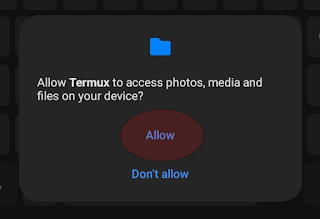Fake News (GTL - September 2024)
Fake News
Introduction
In this edition of GTL, we explore the topic of fake news. Fake news refers to false or misleading information presented as news. Nowadays, the majority of people consume news through electronic devices. Advances in AI and the evolution of apps have made it easy for practically anyone to manipulate audio, video, and text. These tools can create scenarios where people appear to be in places they've never been, say things they've never uttered, and generate text in their style that they've never produced.
Once disinformation is created, it spreads rapidly, potentially reaching billions of people within seconds. Companies and individuals, for a fee, promote and disseminate this information, pushing it to the top of the targeted audience lists.
Fake news serves the purpose of controlling public opinion. It can either favour the originator, making their case appear more favourable than it is in reality, or target opponents, portraying then and their agenda negatively.
We can broadly classify fake news as political, commercial, and social. Political fake news aims to influence voting behavior, commercial fake news impacts spending habits, and social fake news empowers certain groups or individuals or harms others.
When users like, share, or comment on an article, they amplify its reach. This mechanism is exploited by those spreading fake news, who employ various tactics to emotionally manipulate audiences. Once a post garners sufficient likes and shares, platforms often highlight it as popular, further disseminating the content. This phenomenon is commonly referred to as "going viral".
Repeated exposure to a viral story can increase its credibility, as people may assume widespread sharing indicates accuracy. To manipulate this system, fake news purveyors often use sensational headlines or images to provoke reactions without prompting critical thinking. Additionally, offering incentives like rewards for likes or shares can artificially inflate engagement.
A particularly deceitful tactic involves editing a post after it has gained traction. The original post's popularity is then falsely attributed to the altered content, misleading the public.
Wikipedia Fake News page - History Section
Type: History
URL: https://en.wikipedia.org/wiki/Fake_news#History
The history section highlights notable instances of misinformation throughout history, forming part of an extensive and detailed article on the subject.
Fake news is not a modern phenomenon. One of the earliest recorded instances dates back to 13 BC, involving Rameses the Great, who disseminated falsehoods and propaganda about the Battle of Kadesh and his role in it. In a manner typical of Wikipedia, these stories are linked to other Wikipedia pages and reference the original sources of the quoted information.
A short guide to the history of 'fake news' and disinformation (PDF)
Type: History
This training guide serves as a learning module for journalists, educators, and media literacy advocates, offering case studies, exercises, and best practices for identifying and combating disinformation.
It offers a chronological list of fake news stories, interwoven with satirical pieces. Satire, a humorous art form, often fabricates and exaggerates stories to ridicule individuals or situations.
Besides the historical aspect, it discusses how fake news and disinformation affect public trust, polarize societies, and pose challenges to journalists.
University of West Florida: Tips for Avoiding Fake News
Type: Fake News Resources
URL: https://libguides.uwf.edu/c.php?g=609513&p=4274530
The University of West Florida offers a dedicated section on Fake News. This resource provides information about identifying and debunking false information, as well as links to external fact-checking websites.
The section Workshop Presentation has a downloadable PowerPoint presentation that presents users with various news stories. Participants must determine whether each story is real or fake, with answers provided in the presentation notes.
Instructional Survey section did not work.
Find the Fake!
Type: Fake News Quiz / Game
URL: https://www.internetmatters.org/issues/fake-news-and-misinformation-advice-hub/find-the-fake/InternetMatters.org was featured in GTL in December 2023. It has an excellent section dedicated to fake news, with a quiz as one of the interactive activities on the topic. This engaging quiz adapts to different age groups and can be played individually or competitively with a friend.
Break the Fake Quiz
Type: Fake News Quiz / GameURL: https://mediasmarts.ca/quiz/break-fake-news
This quiz challenges you to identify whether a story is real and fake. It features eight questions. There are many online games dedicated to helping you identify fake news. Try searching for 'fake news quiz' or 'fake news game' to find more content similar to this.
If you discover a link for inclusion in the Great technology links - Great learning at zero cost, share it as a comment.
Only share a link if:
- You have verified it.
- If free. Free means without restrictions and limitations.
- It is in English.
- It is Legit.














Comments
Post a Comment